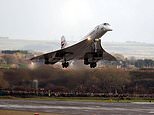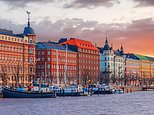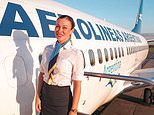
More than 20 years since the Concorde made its final journey, industry insiders have confirmed that the next generation of supersonic jets could enter service in the next few years.
The announcement follows the signing of new US legislation this June, removing bans on supersonic travel over land.
This has been made possible by modern noise-reduction technologies that suppress the loud sonic booms, which was a criticism of the original Concorde.
The new aircraft unofficially dubbed ‘Concorde 2.0’ is being led by Fly‑Concorde Ltd, a company backed by international engineers and aviation innovators, according to Euro Weekly News.
The updated version of the Concorde will feature a host of new design elements and cutting-edge technology.
The aircraft will be powered by sustainable aviation fuel, weigh approximately 50 per cent less than its predecessor and fly at altitudes of up to 60,000 feet.
Reports suggest that the first commercial services are being timed to coincide with the 50th anniversary of Concorde’s maiden transatlantic crossing in 1976.
Journey times on routes such as London to New York, or Los Angeles to Washington, could be reduced to just two hours – a drop from the current six to seven hours.
More than 20 years since the Concorde made its final journey, industry insiders have confirmed that the next generation of supersonic jets could enter service in the next few years
Ticket prices are expected to be high initially, appealing to business travellers and premium fliers.
However, manufacturers hope that operating costs will eventually come down, allowing broader public access to ultra-fast travel.
Though not a direct relaunch of the original Concorde, which was decommissioned in 2003, this new chapter in aviation honours its legacy while embracing 21st-century environmental and technological standards.
The Concorde was the first turbojet-powered supersonic airliner to enter service flying passengers across the Atlantic at twice the speed of sound.
Only two airlines, Air France and British Airways, operated the original Concorde commercially, starting in 1976.
Due to the loud sonic booms created by breaking the sound barrier, its flights were restricted to transatlantic routes over the ocean.
Concorde’s famous passengers included royalty, musicians, actors, and politicians, such as Queen Elizabeth II, Paul McCartney, Mick Jagger and Joan Collins.
Concorde made its last-ever flight on November 26, 2003, departing Heathrow Airport and landing in Bristol, greeted by a cheering crowd gathered behind fences near the runway
Pictured: Concorde touches down at Airbus UK’s Filton airfield, Bristol, for the very last time, after a special flight from Heathrow Airport to the site where the supersonic plane was made
It comes as NASA’s X-59, a supersonic research aircraft, could fly from the capital of the UK to New York in around three hours and 44 minutes.
Described as ‘quiet’, the aircraft’s special design means it will make a thump noise instead of a loud sonic boom.
The $247.5 million jet has been dubbed the ‘Son of Concorde’.
It is currently being tested in California at the US Air Force Plant 42 and is undergoing safety system evaluations before it can make its debut flight.
Share or comment on this article:
‘Concorde’ set to return – and London to New York flights could be just two hours
Source link
CHECK OUT: Top Travel Destinations
READ MORE: Travel News



